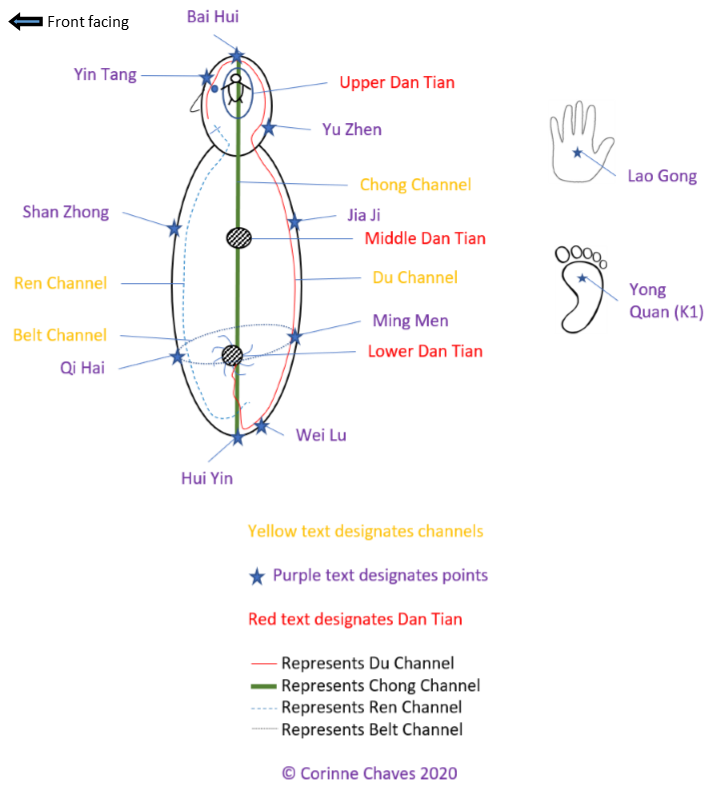Taiji translates as Supreme Ultimate. It is the highest form and most challenging of the Nourishing Life practices.
Qigong is the related foundation set of movement oriented practices. Qi Gong translates as Qi = Breath/Energy, Gong = Work/Practice. The term Qigong was coined in the 20th century in China as an umbrella term encompassing the ancient practices of:
- Dao Yin (transmit/lead/guide on the Way, Lead) – stretching and self-massage
- Nei Shi (internal look)
- Jing Zuo (Sit still)
- Ming Xia (deep thinking/contemplation)
- Tiao Xi (regulate breath)
There are hundreds of Qigong Forms (groups of movements) and thousands of Qigong movements. Each school has its own group of forms which have evolved and been assembled over the millennia. Qigong has its roots in ancient Chinese dance and healing practices going back over 5,000 years. Taiji was developed around 600 years ago and is considered the highest form of Qi Gong.
Taiji is Qigong.
The reason the Chinese focused so much on health is that they believed that one had to be alive in the body in order to refine the self to be able to go to heaven, so healthy longevity was crucial for their pursuit of immortality (ascension to heaven). Because of this they developed a health-oriented culture that included all of the Nourishing Life practices. For our purposes, we can benefit from the health practices regardless of our personal belief system.
Anatomy and Physiology
Each culture has developed its own description of the anatomy and physiology. Our western system looks at skeleton, organs, systems of nerves, blood vessels, digestive, reproductive, elimination, and other processes, and organizes them into systems.
The Chinese approach organizes anatomy and physiology according to Five Element theory. While I wont go into this in detail here, this principle is used to categorize everything from colors, smells, taste, sounds, foods, and emotions to internal organs and anatomical and physiological systems.
Underlying all of these are a couple of basic ideas that are beneficial to at least be exposed to to enhance your Taiji and Qigong practice.
Energetic Foundation
Within all of these practices is the basic idea that first comes the energy body, then the physical body.
When we do Qigong practice, we are working at the subtle level on energy movement, improving the flow, quality and quantity of foundation energy in order to improve physical health.
The Chinese view of the energy body in Qigong is the same as that in Acupuncture.
We divide the energy body into 2 parts:
The 8 Extraordinary Vessels and the 12 Primary Channels. It is believed that the Extraordinary Vessels precede the Primary Channels in the development of the human embryo.
For our purposes we are mostly concerned with 4 of the 8 Extraordinary Vessels.
Chong Mai – the central vessel – it runs between the perineum (Hui Yin) and the top of the head (Bai Hui.)
Du Mai – the governing vessel – through which Yang energy is delivered to the 6 Yang primary vessels and organs. It runs upward from the tail bone (Wei Lu), around the skull to just below the nose.
Ren Mai – the conception vessel – through which Yin energy is delivered to the 6 Yin primary vessels and organs. I also runs upward from the perineum (Hui Yin) to the base of the lower lip.
Dai Mai – the belt vessel – which circles the waist and controls the flow of energy up and down through the entire system.
In addition to these four vessels, we want to be aware of our Dan Tian. We have 3 Dan Tian (Elixir Fields) or energy centers. In particular the lower Dan Tian, located in the center of the belly below the belly button is considered to be similar to the gas tank in a car – it is our reservoir of primordial energy. If the gas tank is empty the car can’t run, if the quality of the gas is poor, the car will run but not well. The Dan Tian is the source of the energy which enervates the organs and powers the entire system.
Most of us have blockages in some or all of the vessels and so experience less than optimal health. Qigong movements target specific organs and vessels and the smoothing, clearing and enhancing of the flow of energy through these pathways and the improvement of the quality and quantity of energy in the Dan Tian.